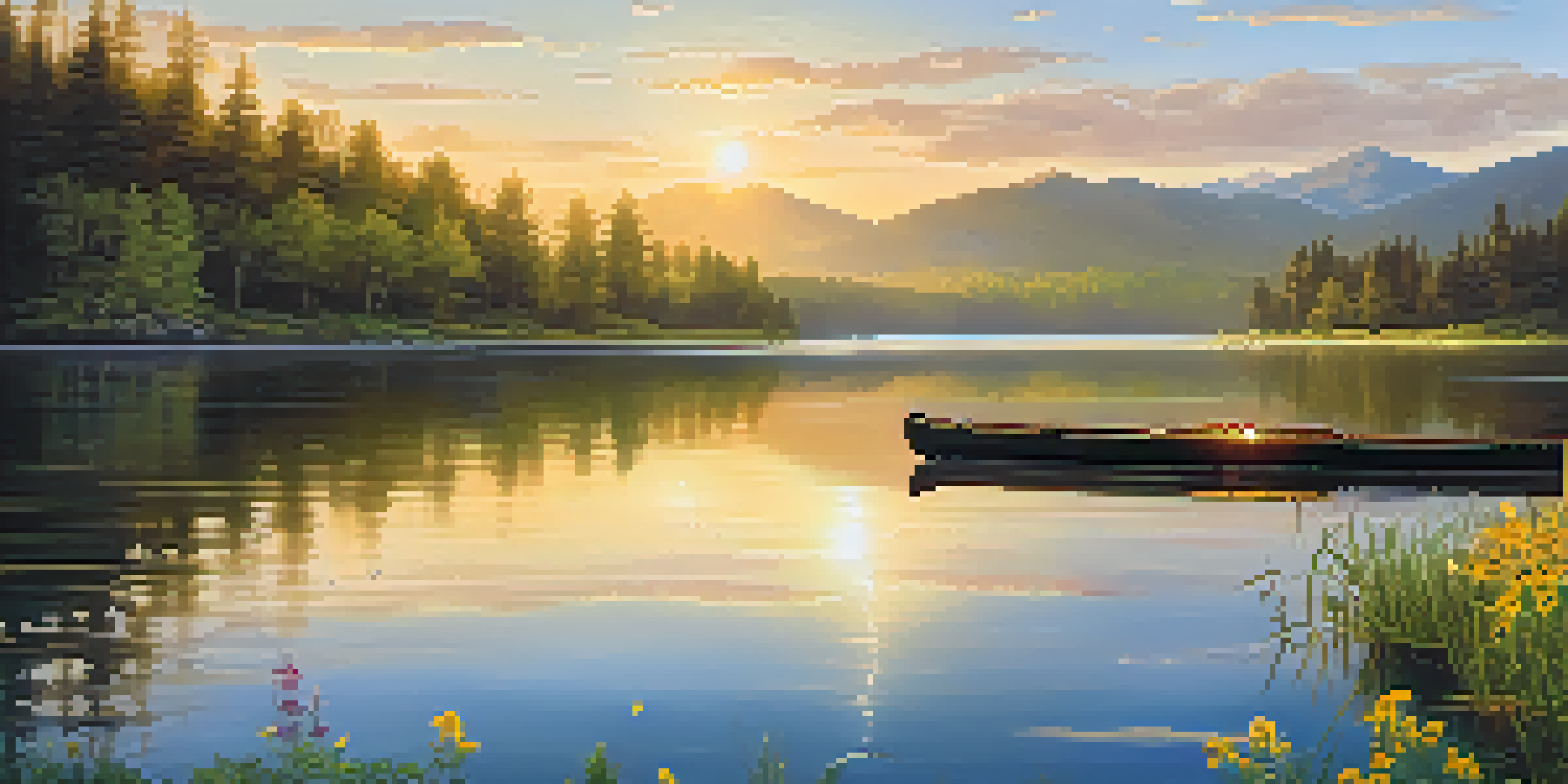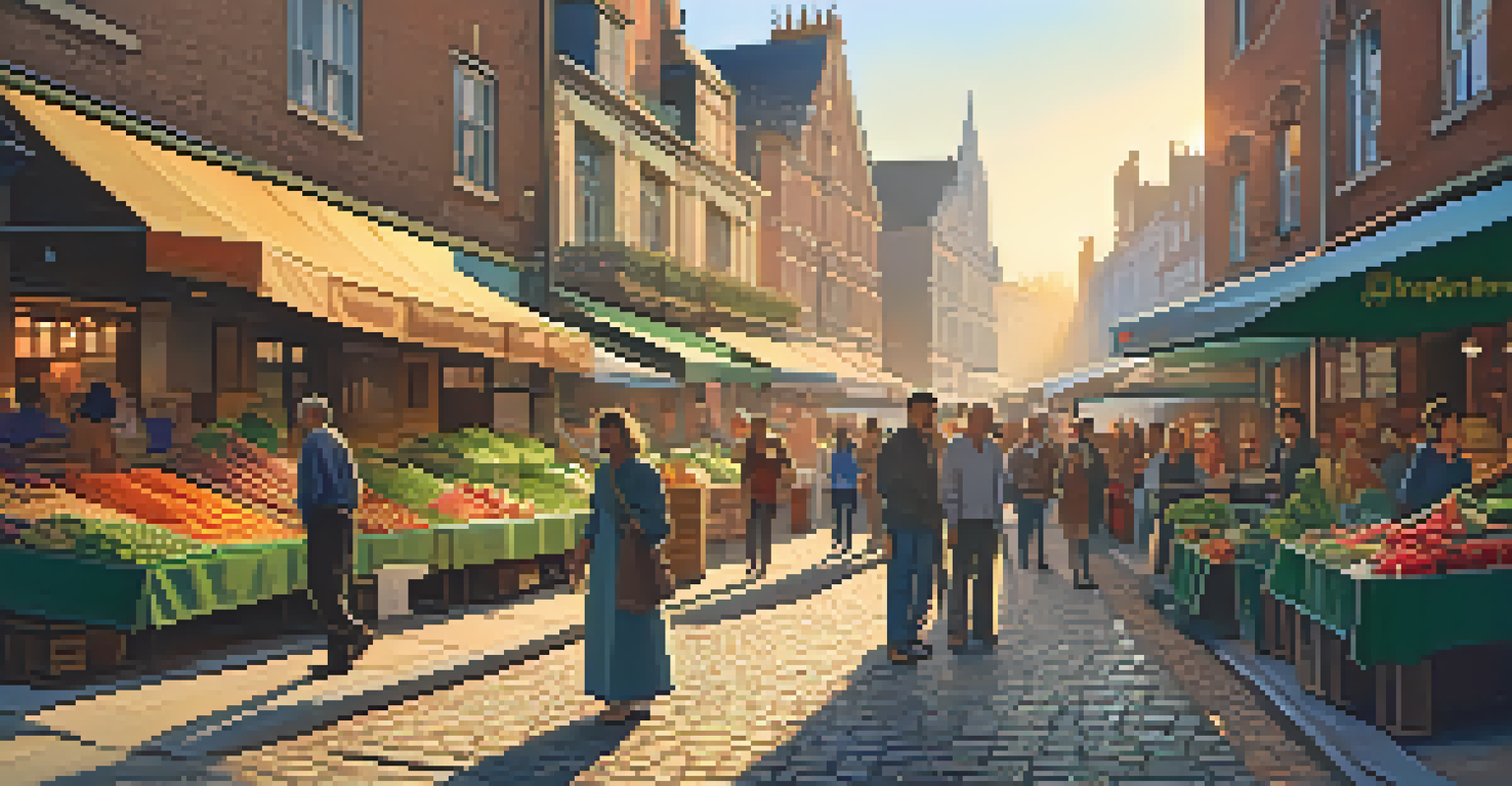Travel Photography Challenges: Overcoming Common Obstacles

Understanding Lighting: The Key to Stunning Travel Photos
One of the most significant challenges in travel photography is mastering lighting. Natural light can vary drastically depending on the time of day and weather conditions, which can make or break your shot. Early mornings and late afternoons often provide the best lighting, known as the golden hour, creating softer shadows and vibrant colors.
Photography is the story I fail to put into words.
To overcome lighting challenges, consider investing in a reflector or a portable flash. These tools can help you manipulate light to your advantage, especially in harsh conditions. For example, using a reflector can bounce sunlight onto your subject, enhancing details and reducing unwanted shadows.
Additionally, understanding how to adjust your camera settings can make a world of difference. Experiment with ISO, shutter speed, and aperture to find the perfect balance for the lighting conditions you're facing. This technical know-how will empower you to capture breathtaking images, regardless of the environment.
Dealing with Crowds: Finding Your Unique Shot
Travel hotspots can be packed with tourists, making it challenging to capture that perfect image without distractions. To combat this, try visiting popular locations during off-peak hours, such as early mornings or late evenings. This way, you can enjoy a quieter atmosphere and have a better chance of getting that unique shot.

Another strategy is to change your perspective. Instead of taking the classic shot from eye level, consider crouching down or finding an elevated position. This can help you frame your subject differently and avoid including crowds in your photos. Sometimes, a simple change in angle can turn a crowded scene into a stunning composition.
Mastering Lighting for Great Photos
Understanding and manipulating natural light can significantly enhance your travel photography.
Lastly, be patient and wait for the right moment. Sometimes, all it takes is a few minutes for the crowd to disperse or for someone to step out of the frame. Embrace the wait; it can lead to capturing extraordinary moments that others might miss.
Weather Woes: Embracing the Elements in Your Photography
Weather can be unpredictable, and sometimes it doesn’t cooperate with your travel plans. Rainy days or overcast skies can seem like a disaster for photography, but they can also offer unique opportunities. For instance, clouds can create dramatic backdrops and enhance colors, especially during sunrise or sunset.
The best camera is the one you have with you.
To prepare for adverse weather, pack protective gear for your camera and yourself. Waterproof bags and lens covers can save your equipment from unexpected rain, ensuring you don’t miss a moment. Moreover, embrace the weather by capturing scenes that reflect the mood, like raindrops on a window or the reflection of a stormy sky in a puddle.
Additionally, consider adjusting your editing techniques to enhance images taken in less-than-ideal conditions. Increasing contrast or saturation can help bring out colors that may have been muted by the weather. By adapting your approach, you can turn a gloomy day into an exciting photography adventure.
Cultural Sensitivity: Respecting Local Customs in Photography
Capturing the essence of a culture is one of the joys of travel photography, but it's crucial to do so respectfully. Different cultures have varying attitudes toward photography, and what might seem harmless to you could be intrusive to others. Always research local customs before taking photos, especially in sacred or private spaces.
When in doubt, ask for permission before snapping a photo, particularly of people. A simple smile and a friendly approach can go a long way in making connections and capturing authentic moments. For example, in some cultures, a polite request can lead to richer interactions and stories that enhance your photography.
Respect Local Customs When Shooting
Being culturally sensitive and seeking permission can lead to more authentic and meaningful photography experiences.
Moreover, consider sharing your images with the communities you photograph. This gesture shows appreciation and respect for their culture, and you might even receive valuable insights or suggestions for more authentic shots. Building relationships through photography can lead to memorable experiences and deeper storytelling.
Gear and Equipment: Traveling Light While Staying Prepared
Choosing the right gear for travel photography can be a daunting task, especially when you want to keep your bag light. While it’s tempting to pack every lens and accessory, consider what you truly need for your trip. A versatile zoom lens can cover a range of situations without weighing you down.
Additionally, prioritize lightweight and compact gear. For instance, mirrorless cameras are often more travel-friendly than DSLRs while still delivering excellent image quality. Bringing a portable tripod can also help you capture stable shots in low-light situations without adding too much bulk to your bag.
Lastly, don’t forget to pack extra batteries and memory cards. Running out of power or storage can hinder your photography experience, especially when you're in the midst of capturing stunning landscapes or vibrant street scenes. Being prepared ensures you won’t miss out on any of those picture-perfect moments.
Time Management: Making the Most of Your Travel Itinerary
One common challenge faced by travel photographers is balancing sightseeing with photography. It’s easy to get caught up in a packed itinerary, but allowing yourself time to explore and shoot can lead to more authentic images. Consider scheduling photography time into your daily plans to ensure you capture the moments that inspire you.
Try to identify specific locations or scenes you want to photograph ahead of time. This way, you can plan your day around those spots and avoid feeling rushed. For example, if you're visiting a city known for its street markets, allocate time to wander and capture the vibrant atmosphere without the pressure of a ticking clock.
Travel Light with Essential Gear
Choosing versatile and compact photography gear allows you to capture stunning images without being weighed down.
Remember, the best photos often come when you least expect them. Allow for spontaneity in your schedule, and don’t hesitate to deviate from the plan if something catches your eye. Embracing flexibility can lead to wonderful surprises and unforgettable captures.
Post-Processing: Enhancing Your Travel Photos with Care
Once you've captured your travel photos, the next step is post-processing. While it's tempting to apply heavy filters and effects, subtle enhancements often yield the best results. Focus on adjusting exposure, contrast, and color balance to bring your images to life without overshadowing the original shot.
Using software like Lightroom or Photoshop can help streamline your editing process. These tools offer a range of options that can elevate your photos, from basic adjustments to advanced techniques like layering and masking. Investing time in learning these skills can significantly improve the quality of your final images.

Moreover, consider creating a consistent editing style that reflects your unique voice as a photographer. This can help your work stand out and create a cohesive portfolio. Remember, the goal of post-processing is to enhance the story behind your images, not to create a completely different one.
Sharing Your Work: Building a Community Around Travel Photography
After all the hard work of capturing and editing your travel photos, it’s time to share your art with the world. Social media platforms like Instagram and photography websites provide excellent avenues to showcase your work and connect with fellow enthusiasts. Engaging with others can foster a sense of community and inspire further creativity.
When sharing, consider writing captions that tell the story behind each image. This not only gives context to your work but also invites viewers to connect on a deeper level. For instance, sharing the journey that led to a particular shot can resonate with your audience and make your photos more impactful.
Finally, be open to feedback and collaboration. Joining photography groups or forums can lead to valuable insights and opportunities for growth. Remember, every photographer was once a beginner, and sharing your experiences can encourage others while enriching your own journey.